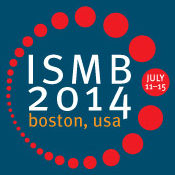About the Meeting

The meeting is designed to bring together world experts in RNA processing, non-coding RNAs, and computation to discuss recent advances in the integrated view of RNA biology and its relation in mechanisms of cell regulation and human disease. We aim to bridge the gap between the different research fields in order to generate new research ideas. Moreover, as many of the studies involved rely heavily on clever computational approaches to analyze high-throughput data sets, we expect that the context of the ISMB conference and the participation of computational experts will give rise to fruitful interactions and will provide the basis for building a port for shared resources and tools in this fast developing field.
Background and Aims
RNA processing involves complex and highly regulated mechanisms that affect many biological processes, such as cell type differentiation, sex-determination, or apoptosis. One important component of RNA processing is alternative splicing (AS), by which pre-RNA can be spliced to produce different mRNA isoforms. Defects in either cis-acting regulatory elements or trans-acting factors that mediate alternative pre-mRNA processing can lead to aberrant mRNA isoform generation and even human disease. Additional components involved in RNA processing include alternative polyadenylation (APA) and the expression of many non-coding RNAs, such as micro-RNAs (miRNAs), small-interfering RNAs (siRNAs), PIWI-interacting RNAs (piRNAs), or long nuclear RNAs.
While many of these phenomena have been studied separately, accumulating evidence now points towards the interplay between transcription, RNA processing, RNA turnover and the effects non-coding RNAs exert on these machineries. This interplay leads to a new, interconnected system view of gene expression regulation. In parallel, the advent of high-throughput methodologies enabled researchers to obtain genome-wide measurements of the make-up and the regulation of the transcriptome within a well-defined biological context. However, the complexity of these data also poses interpretation challenges, particularly when considering that the snapshot of the transcriptome that high-throughput methodologies permit us to obtain are the result of many integrated regulation processes.
In this meeting we aim to bring together world experts in the fields of RNA processing, non-coding RNAs, and computation to discuss recent advances in RNA biology and its relation to human disease. We hope the meeting will foster new interactions and help bridge the gap between researchers in the different fields.
